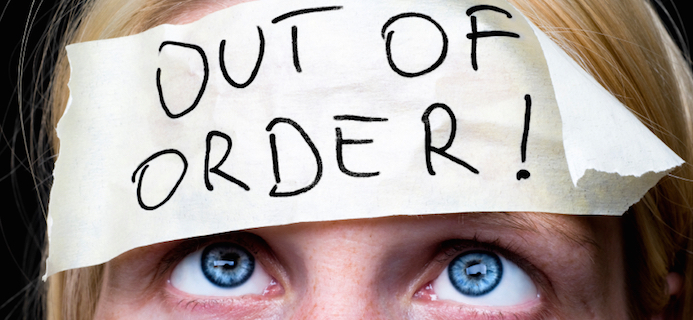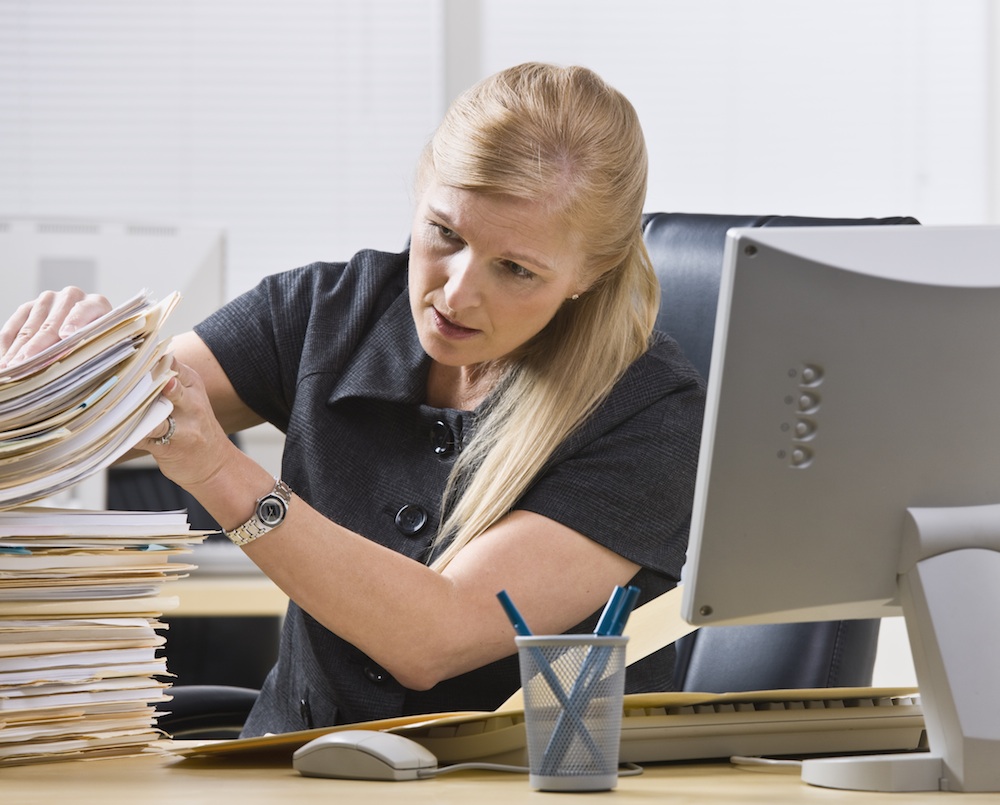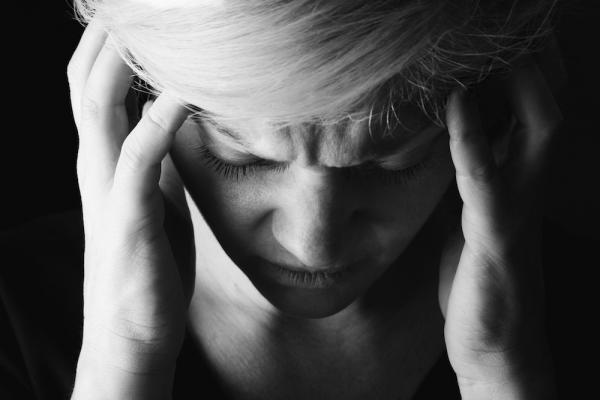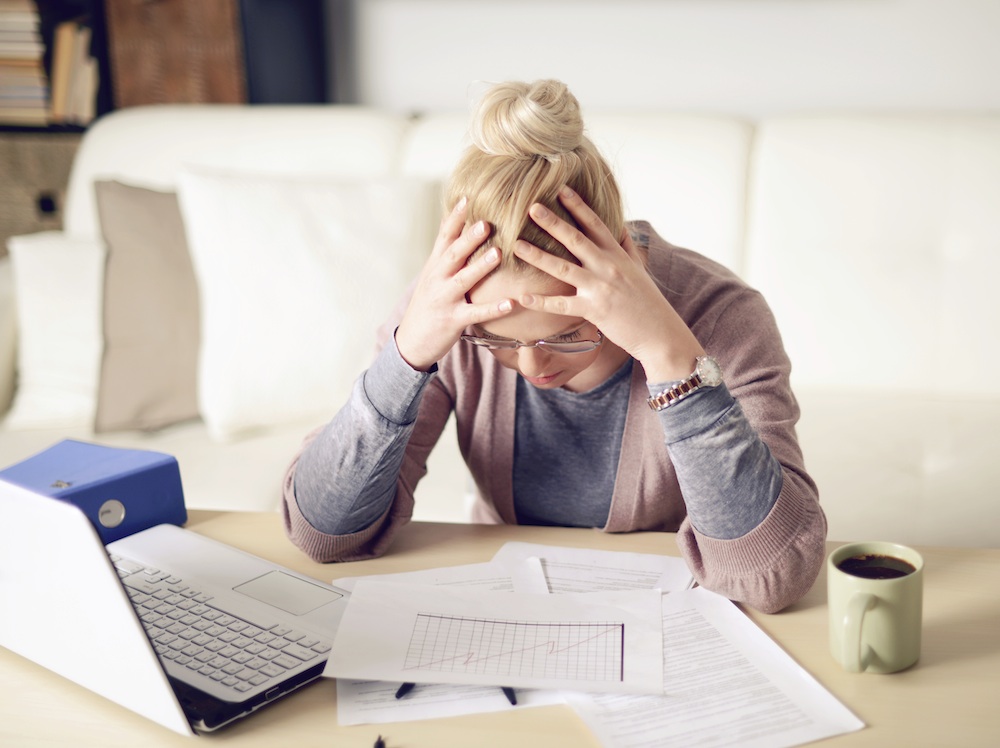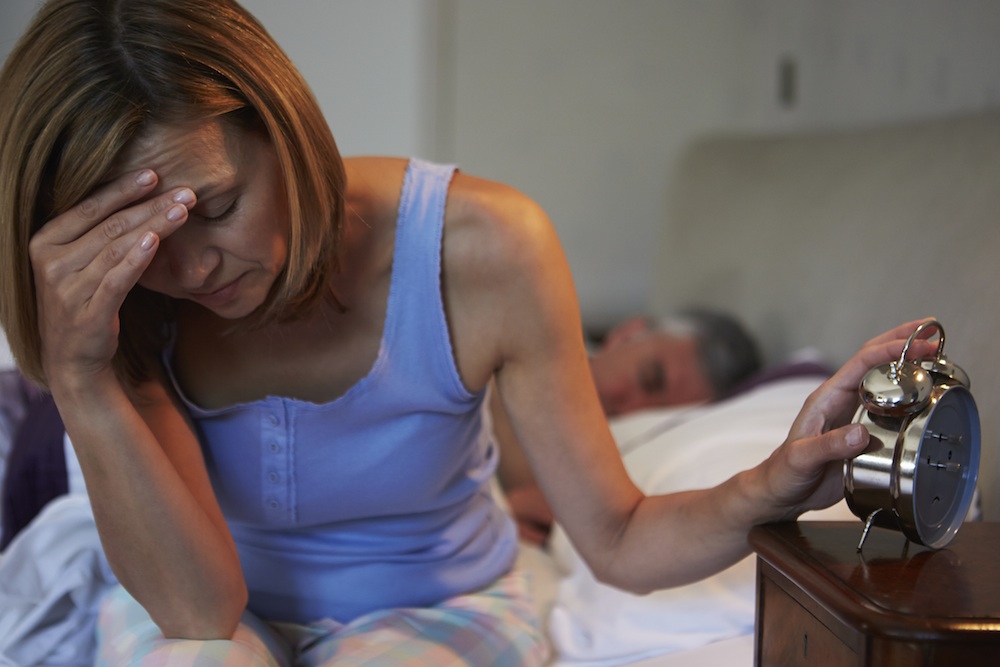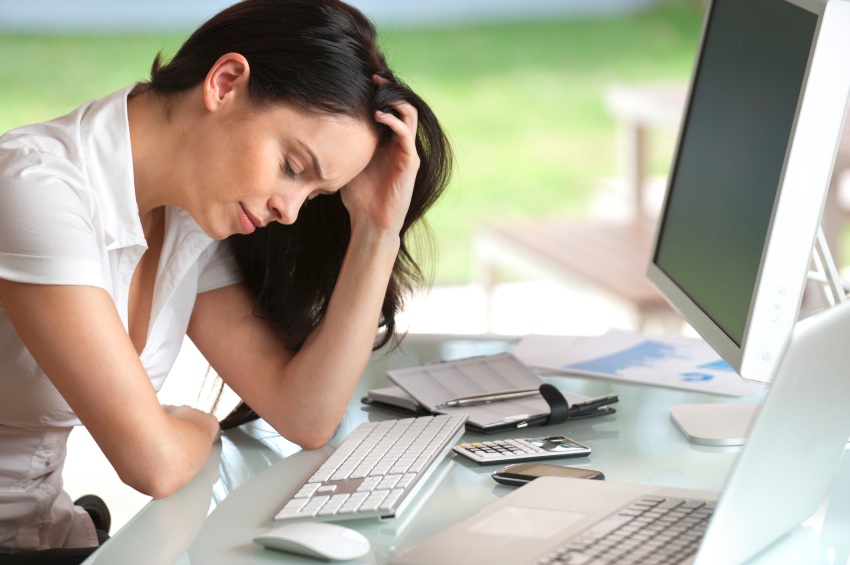We all experience stress at some point in our lives and may have certain beliefs about how it affects us – stress expert Charlotte Watts brings you 6 stress myths you’re probably buying into
The word ‘stress’ can get thrown around as a blanket term to cover anytime we feel not quite right. But not all stress is created equal, nor is it all bad for you. In fact, being able to recognise different types of stress and knowing exactly what it is – and isn’t – is the first step in being able to deal with it.
MYTH #1. Stress equals high anxiety
I meet many people in consultation who are showing signs from strain from high demands in life. Often they say ‘but I don’t feel stressed’, meaning that they don’t have tendencies to go into anxiety, agitation, panic or high fear mode. When we see stress as just the very heightened end of the response spectrum, we can miss the subtleties and its true definition.
If you look at the dictionary definition, the first entry comes from its initial use within physics, ‘pressure or tension exerted on a material object’. Even when we move onto the stress that relates to our experience, ‘a state of mental or emotional strain or tension resulting from adverse or demanding circumstances’, there’s nothing about how that reaction is expressed. Here’s where it gets personal and where we need to be clear that stress is neither a good nor a bad thing, it is simply a provocation to a reaction, a poke for us to be motivated to respond.
stress is neither a good nor a bad thing, it is simply a provocation to a reaction, a poke for us to be motivated to respond.
Stress is the state when our whole bodies (and minds) goes into survival mode. We are set from our days in the wild to have the protective assumption that when we are presented with a demand or challenge, in the first instance we react as if its trouble. From there we don’t get caught out and we can relax after we’ve assessed the situation as safe.
We are set from our days in the wild to have the protective assumption that when we are presented with a demand or challenge, in the first instance we react as if its trouble.
So of course this can come with full battle-ready anxious mode if we’re set high on the fear side of things, but simply going into the motivated and protective fight-or-flight stress response really doesn’t necessarily mean that’s our usual physical expression. For many (probably the majority), the increased heart rate, heightened senses, tensed muscle and vigilant brain can simply feel motivated and alert. So often we don’t necessarily see this as ‘stressed’, just productive, busy or keen.
Being aware of when we’ve gone above a basic resting state is a good first step to noticing how things are and how we can manage our lives, expectations and recovery to stay away from constant stress feeding into anxiety. As the esteemed expert on stress and all things human behaviour Robert Sapolsky says in his book Why Zebras Don’t Get Ulcers; ‘A large percentage of what we think of when we talk about stress-related diseases are disorders of excessive stress-responses.’
Key tip: look out for your own subtle (and not so subtle) signs that you need to lighten the load.
MYTH #2: Stress is all bad
We can like this ‘up’ state, it gets things done and makes us feel in control, but it is also wearing on all systems and uses up energy quickly. This means that if it becomes our default mode, we can start to see what get called ‘stress-related symptoms’, signs that are coping mechanisms and even basic day-to-day functions are feeling the strain. Irritability, fatigue, low mood, poor concentration, reliance on sugar and stimulants, sleep issues and digestive problems are just a few signs that we may be struggling to find equilibrium and resources are low.
So if stress is relentless, with no respite and no time prioritised for recovery, it can grind us down. That still doesn’t make it simply ‘bad’. Coming back to its definition as provocation takes away this need to judge it one way or another. Motivation and alertness are certainly not wrong, unpleasant or even detrimental in their own right. We need them to get up in the morning, keep going and even to care about our lives and those of the people around us. This is well illustrated in those who suffer burnout or adrenal fatigue with lower than ideal levels of the stress hormone cortisol, commonly after long periods of chronic stress or trauma. In a 2013 research paper titled ‘The Medical Perspective on Burnout’, a period of over-activity where stimulus and demand create continual reaction, eventually result in lowered communication from the brain to the adrenal glands (which produce stress hormones like cortisol and adrenaline).
Irritability, fatigue, low mood, poor concentration, reliance on sugar and stimulants, sleep issues and digestive problems are just a few signs that we may be struggling to find equilibrium and resources are low.
This extreme example can even leave natural stress responses dampened and shut down, making those with burnout feeling unresponsive, listless and unable to get going. This can even stop appropriate reactions to circumstances that should be registering as stressful – like not studying for an exam or getting out of a stressful home or work situation – they just don’t have the energy or motivation.
So a balance between hyper-arousal (too much) and hypo-arousal (too little) can find a happy medium where we don’t feel were lurching between high stress and low energy and mood. If stress isn’t wiping us out, then the right amount of physical and mental challenge can help make us resilient, adaptable and more able to cope. An obvious example is exercise; moderate amounts have shown to create stronger bones and hearts, but take this to its extreme (especially if you add in work stress) and it can become a damaging source of oxidative stress in body tissues, associated with inflammation and chronic disease. The mental workout of sudoku keep our brains sharp, but hours on spreadsheets at screens are overstimulating to our brains.
3 characteristics of ‘good stress’
The following positive stressful challenges (extracted from The De-Stress Effect) all create excitement, but are short-term enough to not seem relentless and with ‘no way out’:
- They are within our control (or seem to be) – that job interview might be making you sweat and shake, but there’s plenty you can do to improve your chances of success, such as researching the company and making sure you sleep well the night before. You can’t control the outcome, but you can control your performance.
- They have an end in sight – studying for exams or producing a larger-than-life work project by a certain date are stressful, but they also have an end.
- They are followed by a period of recuperation – even the most prolific entrepreneurs, athletes and pressured pros need downtime or they risk burnout.
4 examples of positive stress
- Exercise that challenges your body and is followed by adequate rest.
- Contact with nature where your skin is stimulated by the elements; the odd sting, scratch and irritation may help reset an over-inflammatory system.
- Being hungry between meals – most animals live in a state of perpetual hunger that galvanizes the overriding imperative to find food; eating fewer calories has been shown to increase health and longevity.
- Intellectual challenges where you feel a sense of control over the situation and can learn to balance problem-solving with the odd frustration; morning crossword anyone?
MYTH #3: Stress is all in your head
If you’ve been subjected to the line ‘it’s all in your head’, you’ll know how frustrating this can be. The truth is nothing is simply mental, emotional or psychological. It’s pretty old-school thinking now to still believe in the viewpoint that we can separate out body and mind. This reductionist way of breaking ourselves (and the world) into different parts doesn’t serve us well, nor is it in any way accurate. The more holistic and systemic stance treats us as whole organisms that respond to internal and external stimulus in a complete way. And this is what is happening every second you are alive.
The more holistic and systemic stance treats us as whole organisms that respond to internal and external stimulus in a complete way.
The external stuff, like communication and dealing with others, noise in the street, as well as the internally generated stuff like worries, fears, planning and decisions to be made, all create a physical response, however psychologically based they might seem. And even when something seems purely external, it also provokes an emotional response as part of how we take action, or not. The whole of our brain and nervous system throughout the body is interlinked and responding as a whole organism.
Take the most primal part of our brain for instance. Often referred to as the reptilian brain, the lowest part near the top of the spine controls our body’s vital functions such as heart rate, breathing, body temperature and balance. It acts on pure instinct, reliably so but if this is to stress (eg raised heart rate) then it can be a bit rigid in going into automatic mode. This part can be related to aggression, dominance and territorial behaviours. So if we have a trauma or fear-based response, our whole physicality can be involved in playing out these defensive acts.
The more emotional part, also present in smaller mammals is the limbic system in the mid-brain. This can record memories of situations or behaviours that produced what is categorised into agreeable and disagreeable experiences. This guides our decisions to withdraw or approach and is responsible for what are called emotions in human beings, leading behaviours related to feeding, parenting and reproduction. There are some theories that discuss how some have tendencies to look after others during periods of stress – looking after ‘the pack’ and often suffering the whole body lack of energy known as ‘compassion fatigue’.
Humans are defined by the neocortex, our large front brains with two hemispheres where language, abstract thought, imagination, consciousness and the ability to cooperate are born. When we’re stressed, this isn’t necessarily the part that’s in charge and we can revert back to more primal modes of survival. This neomammalian brain guides planning and reflective thought and needs a relaxed attitude for us to see these behaviours through to their best potential and not make more knee-jerk decisions we might regret after the stress has passed.
All parts of our brain work together, respond differently to different situations and in different people, guided by previous experience, overall stress load and how much choice we have within it. They are all there to create all of the possible outcomes, many of which we can see ourselves get stuck in. So fear can make us want to pick an argument (fight) or get the heck out (flight). Clearly this is both fully physical and emotional, the two are intertwined through all body systems; none are simply resting, uninvolved, whilst you’re facing an unwanted situation.
Even we don’t play out these events in a physical way, our bodies are preparing for a bodily response. Much modern stress is psycho-social, but even if we’re stock still, heart rate is rising and muscles are tensing to prepare for in-the-moment survival – and we can get stuck there. Just pay attention to your breath and heart rate raising when you simply sit and worry. Anyone who’s had a panic attack can tell you, it wasn’t ‘just in their heads’.
Just pay attention to your breath and heart rate raising when you simply sit and worry
Key tip: pay attention to where emotional stress is felt in your body and what kind of self-care helps you to cope. Simply placing a hand somewhere on your body can help provide the touch we find so reassuring – belly and/or heart are often particularly soothing. Massage, hot baths, stretching and moderate exercise all help move out psychological tensions that get held in your physical being. This is not ‘hippie stuff’, it lets your nervous system know it’s safe to come down.
MYTH #4: Passed stress doesn’t affect you now
Stress is all about survival and that means a short-term view. The long-term vista might be concerned with reflection, contemplation and being true to what makes you fundamentally happy and healthy (hopefully), but when stress hits, it’s all about the here and now. That’s not in the sense of ‘being here now’ and consciously experiencing the present moment – as in a mindfulness practice – but rather a straight up ‘how do I need to act to protect myself and/or the tribe in this very instance’, even if it means an action that affects the future in a less than beneficial way. If that’s arguing our point in a way that loses us respect, responding to a request with a knee-jerk ‘no’ or taking a job we don’t really want out of fear, however it manifests, stress can sow seeds for future times that we don’t feel fully happy with.
Much of how we respond in life and what we respond too (appropriately or inappropriately) depends on the conditioning set by what came before. So we might feel that we’re over that time that we were cheated on or felt that our work situation was precarious, but it is a real, psychological and physical part of our coping mechanisms for our nervous systems to remember these for future protection. This means we might find it difficult to trust and let others in if we were previously betrayed or overworked and get caught up in achievement if we didn’t feel safe at work before.
Much of how we respond in life and what we respond too (appropriately or inappropriately) depends on the conditioning set by what came before
Being able to relax and stay with the reflective and conscious side of our thinking and decision-making is all about safety. Little voices to put up barriers or keep going when we’re exhausted are survival mechanisms; they may not seem to always act in our best interests, but they are there as protection. This is why in mindfulness practices, non-judging and gratitude for negative thoughts and feelings helps to promote a sense of safety. These conditionings can get in the way of us moving on, but until we see (and thank them) as working for our good, can we start to relax and turn it round so that our whole bodies can learn to accept feeling safe in similar situations.
Little voices to put up barriers or keep going when we’re exhausted are survival mechanisms; they may not seem to always act in our best interests, but they are there as protection.
Intuitive vibes of ‘not safe’ originate in the belly. This is not (again) just hippie stuff (although recent science is agreeing with ancient traditions that view the belly as the seat of wisdom), leaps forward in neuroscience are exploring and explaining how gut feelings are very real and to be listened to. These are sent to the brain via the enteric nervous system, the independent ‘second brain’ that runs through our entire digestive tract and is about the size of a cat’s brain – the gut and the brain form from the same piece of embryonic tissue.
There is immense communication between through gut-brain axis which we are only beginning to understand. Only 10% is actually from the brain-to-gut with much of this responding to outside stimulus and incoming food. The majority 90% gut-to-brain signalling is much about digestive function, but is also reporting back on our ‘gut feelings’ – how we respond to the world around us in the same way our brains do, but on a visceral, intuitive level.
This correlates with neuroscientific research into how somatic markers (body state memories associated with previous feeling states) are set from positive or negative emotional responses, then be felt as gut reactions in similar situations. This is how we feel ‘what is true’ – whether we feel safe or unsafe with different situations or people and feel ‘vibes’.
Key tip: Talking therapies can help us process previous experiences, but we also need to truly let our bodies know that we are safe for them to receive the full message and relax. This may mean some form of physical practice that helps us feel embodied (in the body) like gentle yoga, t’ai chi or even country walks. Lying down, legs bent with hands on your belly and feeling your breath there is highly effective for whole body and mind soothing via the calming vagus nerve. Doing this daily for 15 mins or whenever you need to decompress (eg when getting in from work) can create the trust of safety. If you focus on long and releasing out-breaths, the body gets the signals that if you can lie down on the ground and don’t need to run away from anything, you must be safe.
MYTH #5: Familiar situations aren’t stressful
All of this leads us to look at how we are living our lives and where we can tread the same paths that keep us running round in a wheel of stress triggers. It can be quite easy and even convenient to hold onto the belief that if something is part of our everyday lives, then it must be okay, but just because something is familiar, doesn’t mean we can’t play out a knee-jerk response over and over again if we aren’t noticing that and addressing it.
It is so easy for all of us to be dismissive of how casually aggressive jumping out of bed to an alarm, rushing to get out ready in time and pushing down breakfast can be on all body systems.
Take the way we get up and get ourselves out of the door or to our home office space in the morning. It is so easy for all of us to be dismissive of how casually aggressive jumping out of bed to an alarm, rushing to get out ready in time and pushing down breakfast can be on all body systems. This mode of behaving all says ‘jump!’ to the nervous system and when we might be tired and not that enthusiastic to get on the proverbial treadmill of life again, we might feel we need the push of adrenaline to get us going. But starting the day from this agitated state sets that as the whole back drop of the day and can be difficult to come back from. Even just a little more space, consciously slowing down getting washed and dressed and sitting to eat and digest make a huge difference to how our bodies and minds perceive how life is.
Even just a little more space, consciously slowing down getting washed and dressed and sitting to eat and digest make a huge difference to how our bodies and minds perceive how life is.
Letting ourselves relax is productive; it allows creative right-brain thinking to enhance more analytical left-brain mode, recharges energy and resources, alleviates the risk of becoming overwhelmed and anxious, reduces the risk of making mistakes and is often where ideas and inspiration happen – when we’re not just in striving and moving forward mode. Taking breaks isn’t a luxury, it’s a necessity if you want to keep going without snapping.
The same is true of our leisure time. Patterns where we are so tired (from a stressful morning and no breaks perhaps) by the time we get home that dinner is more convenient than healthy and relaxation involves collapsing in front of the TV, simply keep us numbed rather than refreshed. Seeing where these negative coping patterns rise up is key to finding more de-stressing down-time. We are drawn to habitual behaviours that raise the rewarding neurotransmitter dopamine – shopping and compulsive eating are common addicting pursuits that we can find ourselves suddenly immersed by when stress has been insidious and we are lacking in other forms of self-care. The more obvious alcohol, gambling and smoking provide the same brain chemical hit.
Key tip: Just a little watching of where we’re treading depleting paths over and again can help us turn it round to a more peaceful and even fulfilling way of living. There’s a simple balance between relaxing more and feeling pulled by compulsion less that feeds into how we treat ourselves. It’s in the breaks and the spaces between doing where we have the chance to really feel what makes us happy and to maybe experience what meditators call “our true nature”. That’s the place we all go when we’re in nature and really present, feeling love for our children or relaxing in good company. The more we can live there, the less stress our bodies need to keep going.
MYTH #6: We ‘should’ be able to cope with normal life
I often hear clients express surprise or bewilderment that they feel so tired or stressed by their normal day-to-day routines. When I ask them to describe it, the possible roll-call of travel, work, exercise, school runs, looking after others, volunteering and hobbies adds to up to an amazing amount of doing. The question ‘why am I exhausted by 9pm?’ only evoke the answer that being tired by the average day sounds reasonable. Our hunter-gatherer ancestors worked a whole lot let than us and it was only the advent of farming (around 10,000 B.C.) that forced necessity for long and gruelling working hours.
But the original farmers didn’t even have electricity and light late into the night, let only the stimulating input of screens, information and social media. There are so any aspects of living in the technological age that are extremely novel, yet we have so quickly embraced them as normal that there seems to have been no time for consideration of how much they may be stealing from living our lives to their full potential.
What we expect our poor brains to process can leave our whole beings feeling understandably wiped out.
Consider the fact that one weekday edition of today’s New York Times is estimated to contain more information than the average English person in the 17th century was likely to receive in their entire lifetime. What we expect our poor brains to process can leave our whole beings feeling understandably wiped out. ‘Tens of thousands of words daily pulse through our beleaguered brains,’ says philosopher Philip Novak, ‘accompanied by a massive amount of other auditory and visual stimuli. In every moment of the audio-visual orgy of our highly informed days, the brain handles a massive amount of electrical traffic. No wonder we feel burnt.’
This drive to know everything that’s going on and have an opinion about it too drives our modern tendencies to believe that more is better, achievement is always to be strived for and we can’t just be happy with where we are, right now. It only makes sense that this is depleting, tiring and keeps us grasping onwards towards the next thing.
Key tip: Stepping away from input as often as possible helps your brain have the space it needs to let your whole body relax. If you’ve been used to feeling on ‘constant alert’, then this release can leave you feeling vulnerable and it’s important to get used to being with space and a lack of doing – that’s a fine skill to learn! Reading a book at night instead of screen-based activities, not looking at your smartphone before 9am and after 8pm, using train journeys to read or listen to podcasts instead of checking Facebook; all add up to time when you’re not just cramming more stuff into clog you up. Relaxing pursuits like meditation, yoga, massage, swimming, walking, steams, crafts, drawing and anything where time seems to pass quickly allow us to empty out the tension – the antidote to an oversubscribed diary and an overstimulated brain.
More from Charlotte Watts:
Which stress suit do you wear?
3 ways to de stress your conversation
Stressed out? The secrets to dealing with it are in your BELLY – our blogger has 7 ways healing your gut can heal your head
5 office exercises to up your energy at work
10 ways to deal with stress and anxiety you’ve NEVER heard of
7 surprising signs you’re stressed
6 ways to have more energy through the day
Charlotte Watts is a nutritionist and yoga teacher whose work has focused on how nutrition and yoga can meet to help people cope with the demands we face in the 21st century. Her practice and teaching of mindfulness weaves these together and has culminated in her new book De-Stress Effect, The: Rebalance Your Body’s Systems For Vibrant Health And Happiness. She has also authored The De-Stress Diet (with Anna Magee) and 100 Best Foods for Pregnancy and 100 Foods to Stay Young.
Like this article? Sign up to our newsletter to get more articles like this delivered straight to your inbox.



